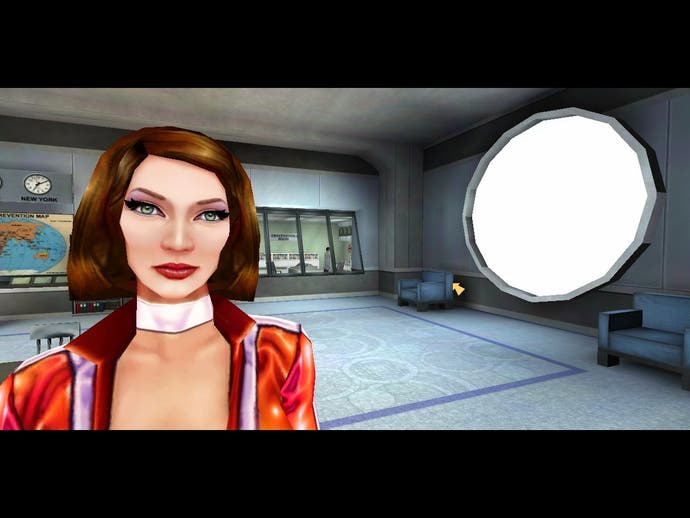Retrospective: The Operative: No One Lives Forever
I spy with my freakishly giant eye.
They say money makes the world go round, but this is somewhat inaccurate. Leftover momentum from the solar nebula makes the world go round. Money, in fact, is not responsible for rotation, gravity, nor indeed any number of other phenomena in the galaxy. It does, however, occasionally make games less interesting.
You simply couldn't make No One Lives Forever today. You couldn't because it would be too long, require far too many assets, and most significantly of all, risk all the cost of development on a comedy game - a genre that no longer exists. Its international scale, its enormous volume of content and its emphasis on making you laugh add up to something that feels like it's from another age - an age before an FPS lasted six hours and cost $250 million.
Set in the 1960s, Monolith's spoof of spy fiction starred Agent Cate Archer in the lead role - a female spy in a male-dominated career, fighting not only for her country, but also for some respect from her doubtful superiors. Her story in a game everyone has forgotten was called The Operative (the 'No One Lives Forever' intended to be a James Bond-style episode title) sees her trek around the world in pursuit of H.A.R.M., an evil organisation murdering UNITY operatives.

Built using Monolith's own Lithtech engine, it's dated enormously but survives well. If anything, the things that stand out as strange stood out just as much in 2000 when it was first released, including the utterly bizarre faces on all the characters, especially their giant alien eyes. Once you're playing there's not a thing to distract you, possibly thanks to its focus on a cartoon style - a design that always lasts longer.
NOLF learned the lesson that Half-Life had to teach, that almost no other games took notice of. It knew to be quiet at the start. The opening sequences, introducing characters, opening up the plot, and teaching you/Archer a series of spy skills in the training rooms, are laid out in the offices of UNITY. It's a day at the office. You get trained, talk to people, visit the Toy Shop to receive your first batch of gadgets, and settle in. The details here are surprisingly lovely - down one corridor, through a glass wall, you can see a secretary catching a nap, cartoon Zs floating from her head. Bang on the glass and she'll wake up. Completely unnecessary, irrelevant to everything, but there anyway.
Which makes it a pretty giant clanging shame that the first mission begins with a tiresome, slow and boring shooting gallery. Stationed at a window you're asked to protect a deaf, senile foreign consular from a series of potential assassins. Then you move to another location, and, er, do the same thing again. What on Earth Monolith was thinking to do this is beyond me, but fortunately it quickly snaps out of this idiocy and becomes a sneaky, stealthy shooter that remains an enormous amount of fun.

There's a genuine choice of how to approach the game. While some levels will fix specific completion criteria restricting your options, often you're left to decide if you want to go with all guns blazing or stealth your way through a mission. The weapons and gadgets you bring with you can determine this too - take lock-picks and silenced pistols and you can be a lot more subtle than if you're carrying lipstick bombs and machineguns. Often you're tasked with avoiding the eye of security cameras, which trigger level-wide alarms. But grow tired of this and you can just trigger them, and put up with the noise and attacks from all-comers.
While there are certainly a lot of missions built around sneaking past security, there's also an enormous amount of variation. Levels set on aeroplanes (finishing in freefalling without a parachute), on motorbikes, trains, even a space station. Each location seems to have been treated as a challenge to the developers: how can we make sure it's still interesting in this tiny space?
I'm always tempted to believe that NOLF and the way it pokes fun at the swinging sixties and accompanying spy culture came before Austin Powers. However, it was the other way around, Mike Myers' movie released three years before Archer first appeared on PC. Unavoidably compared, NOLF's approach is subtler than Myers' (although we're talking degrees of subtle here - Monolith wasn't exactly aiming for sophistication).

